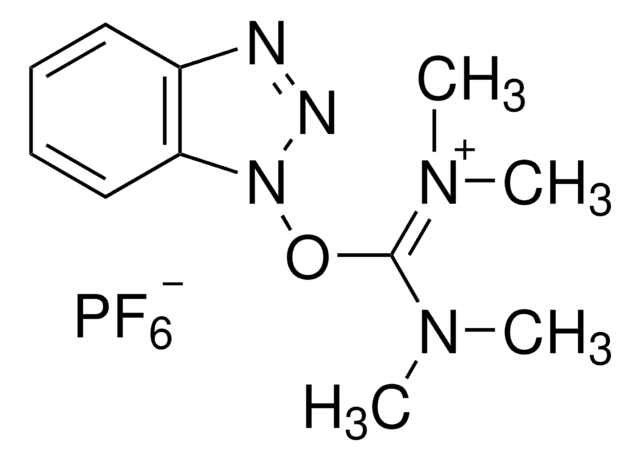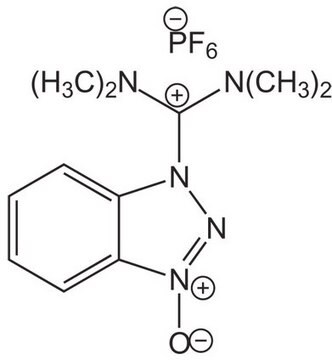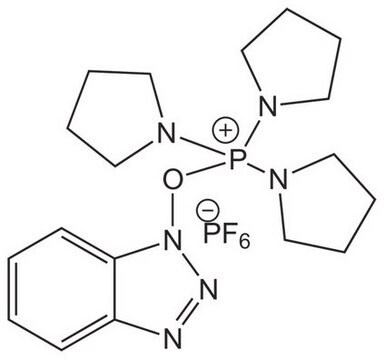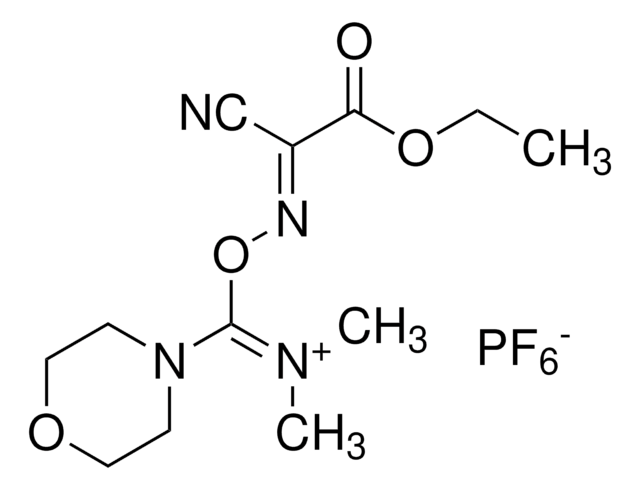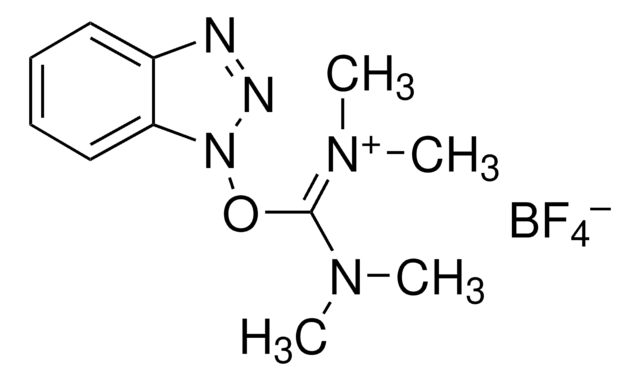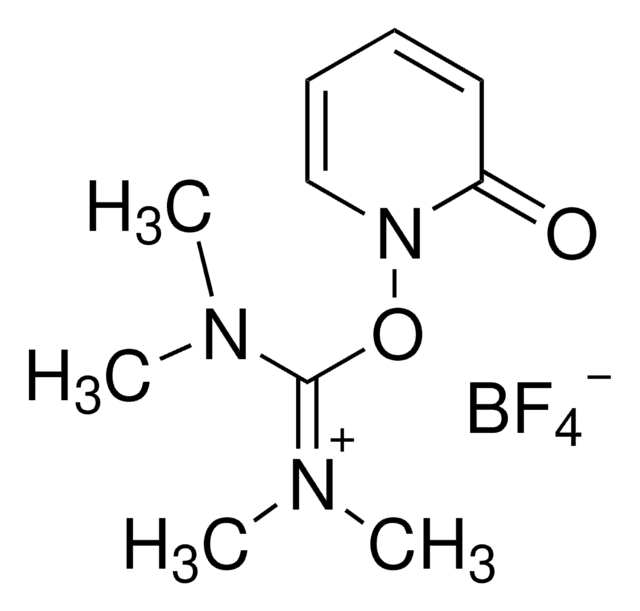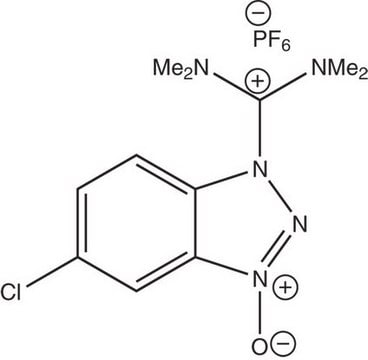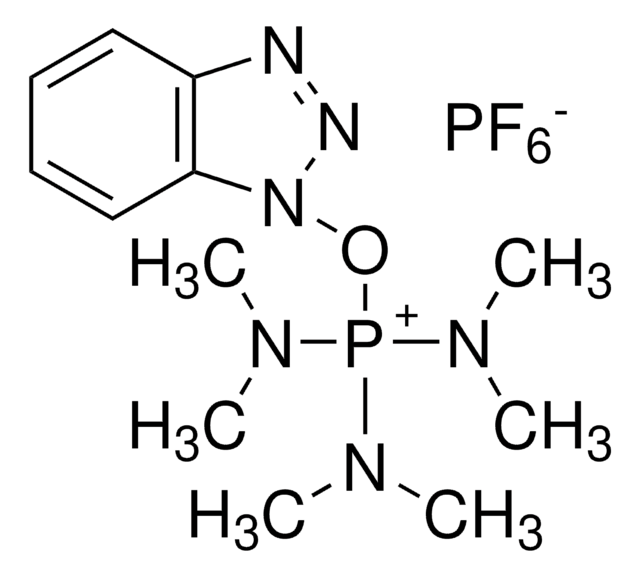8.51008
TBTU
≥98.0% (HPLC), for peptide synthesis, Novabiochem®
Synonym(s):
TBTU, 2-(1H-Benzotriazole-1-yl)-1,1,3,3-tetramethylaminium tetrafluoroborate
About This Item
Recommended Products
Product Name
TBTU, 2-(1H-Benzotriazole-1-yl)-1,1,3,3-tetramethylaminium tetrafluoroborate Novabiochem®
Quality Level
product line
Novabiochem®
Assay
≥98.0% (HPLC)
form
powder
reaction suitability
reaction type: Coupling Reactions
manufacturer/tradename
Novabiochem®
mp
195-199 °C (decomposes)
application(s)
peptide synthesis
storage temp.
15-25°C
InChI
1S/C11H16N5O.B.4FH/c1-14(2)11(15(3)4)17-16-10-8-6-5-7-9(10)12-13-16;;;;;/h5-8H,1-4H3;;4*1H/q+1;+3;;;;/p-4
InChI key
SHGLJDNRZIDILW-UHFFFAOYSA-J
Related Categories
General description
Associated Protocols and Technical Articles
Guide to Selection of Coupling Reagents
Literature references
[1] R. F. Poulain, et al. (2001) Tetrahedron Lett., 42, 1495.
Application
- Synthesis of phospho-urodilatin by combination of global phosphorylation with the segment coupling approach.: This research focuses on the synthesis of phospho-urodilatin, demonstrating the effectiveness of TBTU as a coupling reagent in segment coupling strategies for peptide synthesis (Mostafavi et al., 1996).
- Effect of tertiary amine on the carbodiimide-mediated peptide synthesis.: The study investigates the impact of tertiary amines on carbodiimide-mediated peptide synthesis, highlighting the role of TBTU in enhancing peptide coupling efficiency (Beyermann et al., 1991).
Linkage
Analysis Note
Appearance of substance (visual): powder
Identity (IR): passes test
Assay (HPLC, area%): ≥ 98.0 % (a/a)
Solubility (1 mmole in 2 ml DMF): clearly soluble
Loss on drying: ≤ 0.5 %
Water (K. F.): ≤ 0.5 %
Legal Information
Signal Word
Danger
Hazard Statements
Precautionary Statements
Hazard Classifications
Flam. Sol. 1 - Skin Sens. 1A
Storage Class Code
4.1A - Other explosive hazardous materials
WGK
WGK 3
Flash Point(F)
Not applicable
Flash Point(C)
Not applicable
Certificates of Analysis (COA)
Search for Certificates of Analysis (COA) by entering the products Lot/Batch Number. Lot and Batch Numbers can be found on a product’s label following the words ‘Lot’ or ‘Batch’.
Already Own This Product?
Find documentation for the products that you have recently purchased in the Document Library.
Customers Also Viewed
Our team of scientists has experience in all areas of research including Life Science, Material Science, Chemical Synthesis, Chromatography, Analytical and many others.
Contact Technical Service
